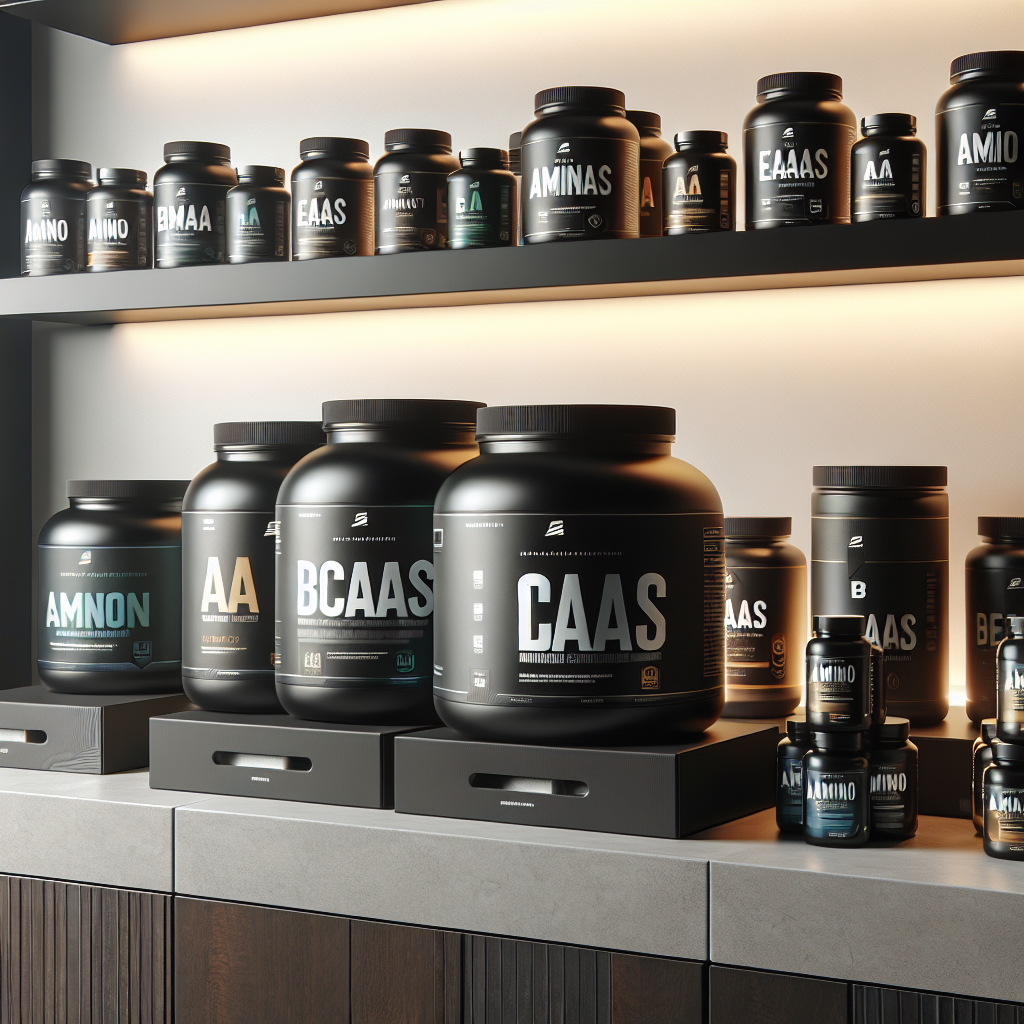Amino acids form the building blocks of protein and play essential roles in nearly every biological process in our bodies. From muscle growth and tissue repair to enzyme production and neurotransmitter synthesis, these compounds are fundamental to human health. In recent years, the supplement industry has witnessed explosive growth in amino acid-based products, with manufacturers and developers racing to meet consumer demand for performance enhancement, recovery support, and overall wellness solutions.
Health-conscious manufacturers and product developers are increasingly incorporating specialized amino acid formulations into their offerings. While this innovation has expanded consumer options, it has also raised important questions about safety, quality control, and potential side effects—particularly regarding liver health. As manufacturers develop new supplement formulations, understanding the complete safety profile of amino acids becomes not just a regulatory concern but a critical business imperative.
The Hidden Impact of Amino Acids on Liver Function
The liver serves as our body’s primary detoxification center, processing everything we consume—including amino acid supplements. When used appropriately, many amino acids support liver function. However, excessive intake can potentially strain this vital organ, creating risks that many manufacturers overlook during product development and testing phases.
Research indicates that high-dose amino acid supplementation may alter liver enzyme activity. Elevated liver enzymes like ALT (alanine aminotransferase) and AST (aspartate aminotransferase) have been observed following intensive amino acid supplementation, particularly with branched-chain amino acids (BCAAs). While these elevations often reflect increased metabolic workload rather than damage, the distinction remains critical for manufacturers to understand and communicate.
More concerning are the documented cases of hepatotoxicity—liver damage resulting from chemical exposure—linked to certain amino acid supplements. These adverse effects can manifest as symptoms ranging from mild (fatigue, digestive discomfort) to severe (jaundice, abdominal pain, and in rare cases, acute liver failure). Such reactions appear most common when supplements are consumed at doses far exceeding nutritional requirements or in individuals with pre-existing liver conditions.
“Protein supplements may cause a temporary rise in liver enzymes like ALT and AST, but this typically signals a higher metabolic workload, not permanent damage,” notes one research summary. However, this temporary elevation could potentially mask underlying issues in vulnerable populations—a critical consideration for product developers creating formulations for diverse consumer groups.
Quality Control: The Safety Gap in Manufacturing
The dietary supplement industry operates under unique regulatory frameworks that place significant responsibility on manufacturers to ensure product safety. Unlike pharmaceuticals, which require extensive pre-market approval, supplements undergo less rigorous scrutiny before reaching consumers. This reality creates a quality control imperative that responsible manufacturers must prioritize, especially when dealing with physiologically active compounds like amino acids.
Comprehensive quality control in amino acid supplement manufacturing should encompass several critical components:
- Source verification and purity testing: Ensuring raw materials meet stringent purity standards, free from contaminants or adulterants that could impact liver health
- Stability analysis: Confirming that amino acid profiles remain stable under various storage conditions without degrading into potentially harmful byproducts
- Bioavailability assessment: Understanding how different formulations affect absorption rates and metabolic pathways
- Dosage validation: Establishing safe, effective dose ranges based on scientific evidence rather than marketing considerations
- Batch consistency: Implementing systems to guarantee uniform quality across production runs
Unfortunately, gaps exist in current manufacturing practices. “Quality control in the dietary supplement industry is a significant concern due to issues like misbranding, adulteration, and contamination,” reports one industry analysis. These shortcomings can translate directly to consumer health risks, particularly for liver function.
Industry leaders recognize that Good Manufacturing Practices (GMP) certification represents a foundation rather than a ceiling for quality assurance. The most responsible manufacturers implement testing protocols that exceed minimum requirements, particularly for ingredients like amino acids that interact directly with critical metabolic pathways.
Current Research on Amino Acids and Liver Health
The relationship between amino acid supplementation and liver function continues to evolve as new research emerges. Current evidence presents a nuanced picture that manufacturers should carefully consider when developing products.
For certain populations, specific amino acids show promising protective effects for liver health. Several animal studies indicate that branched-chain amino acids (BCAAs) may help prevent acute liver injury, though human evidence remains preliminary. Similarly, glutamine supplementation has demonstrated potential benefits for liver regeneration, with researchers noting that “nutritional glutamate supplementation can effectively promote liver regeneration and benefit patients with severe and chronic liver damage.” Scientific research continues to reveal new therapeutic applications for targeted amino acid supplementation.
Conversely, research has identified concerning patterns with excessive amino acid intake. High-dose supplementation can potentially disrupt the delicate balance of amino acid metabolism, creating metabolic stress that manifests in altered liver enzyme profiles. This is particularly relevant for individuals with existing liver conditions, where the metabolic pathways for processing amino acids may already be compromised.
One review examining side effects of increased dietary intake of amino acids found that “high doses of amino acid supplements can cause digestive issues, such as nausea, diarrhea, and abdominal pain.” These symptoms often serve as early warning signs of metabolic stress that could eventually affect liver function if supplementation continues unchecked. This raises important questions about whether daily amino acid supplementation is safe for all individuals.
For manufacturers seeking innovation through strategic ingredient partnerships, this evolving research landscape presents both opportunities and responsibilities. The most forward-thinking companies are investing in independent research to better understand how their specific amino acid formulations interact with liver metabolism across different consumer populations.
Safety Recommendations for Manufacturers and Consumers
Given the potential impact of amino acids on liver health, manufacturers bear significant responsibility for implementing comprehensive safety protocols. Strategic recommendations include:
For Manufacturers:
Implement comprehensive hepatotoxicity screening: Test amino acid formulations specifically for potential liver effects, not just general safety parameters
Develop clear dosage guidelines: Establish and communicate maximum safe dosages based on scientific evidence rather than maximum efficacy claims
Include vulnerable population considerations: Recognize that individuals with pre-existing liver conditions require special attention in formulation design
Invest in post-market surveillance: Monitor real-world usage patterns and adverse event reporting to identify emerging safety signals
Pursue third-party verification: Engage independent laboratories to validate safety claims and quality standards
Transparent labeling: Provide clear information about potential side effects and contraindications, particularly for liver health
Nutritional product developers should consider these recommendations as essential components of a comprehensive approach to amino acid formulation, particularly when targeting performance or therapeutic applications where higher dosages might be employed.
For Consumers:
Consult healthcare professionals: Individuals with pre-existing liver conditions should discuss amino acid supplementation with qualified medical providers
Start with lower doses: Gradually introduce amino acid supplements to monitor for tolerance and adverse reactions
Monitor for warning signs: Be alert to symptoms like unusual fatigue, digestive distress, or jaundice that could indicate liver stress
Choose quality-verified products: Select supplements from manufacturers who demonstrate commitment to rigorous testing and transparency
Consider whole-food alternatives: When possible, obtain amino acids through whole protein sources rather than isolated supplements
Health-conscious product manufacturers can build consumer trust by proactively educating their customers about these safety considerations rather than minimizing potential risks. This approach aligns with established quality standards that distinguish the best amino acid supplements in a competitive marketplace.
Balancing Innovation with Safety: The Path Forward
The continued growth of the amino acid supplement market depends on manufacturers striking the proper balance between innovation and safety. As consumer interest in personalized nutrition and targeted supplementation increases, the industry faces both opportunity and scrutiny. Forward-thinking supplement manufacturers recognize that long-term business success depends on prioritizing consumer safety alongside product efficacy.
Responsible innovation in this space requires several key commitments:
Investment in research: Supporting independent studies on amino acid metabolism and liver health to expand the scientific understanding beyond current limitations
Collaborative regulatory engagement: Working with regulatory bodies to establish evidence-based standards that protect consumers without stifling innovation
Supply chain transparency: Creating full visibility from raw material sourcing through manufacturing to distribution
Personalization frameworks: Developing guidelines for how different consumer profiles might require adjusted formulations or dosages
Education initiatives: Helping consumers understand both benefits and potential risks of amino acid supplementation
The amino acid supplement industry stands at a critical junction where greater attention to liver health impacts is essential for sustainable growth. By embracing higher testing standards and transparent communication about potential side effects, manufacturers can protect both consumers and their own business interests.
As the industry evolves, the companies that will thrive are those aligned with the philosophy that quality, transparency, and consumer empowerment represent not just ethical imperatives but strategic advantages. The future belongs to manufacturers who recognize that being trustworthy partners in health requires acknowledging and addressing even inconvenient safety questions—like the potential impact of amino acids on liver health.
By raising the standard for testing, quality control, and consumer education, manufacturers can ensure that amino acid supplements deliver on their considerable promise while minimizing risk to vulnerable consumers. This approach ultimately builds stronger brands and more sustainable business models in an increasingly competitive marketplace. Addressing stability challenges should also be a priority to maintain product potency throughout its shelf life.


